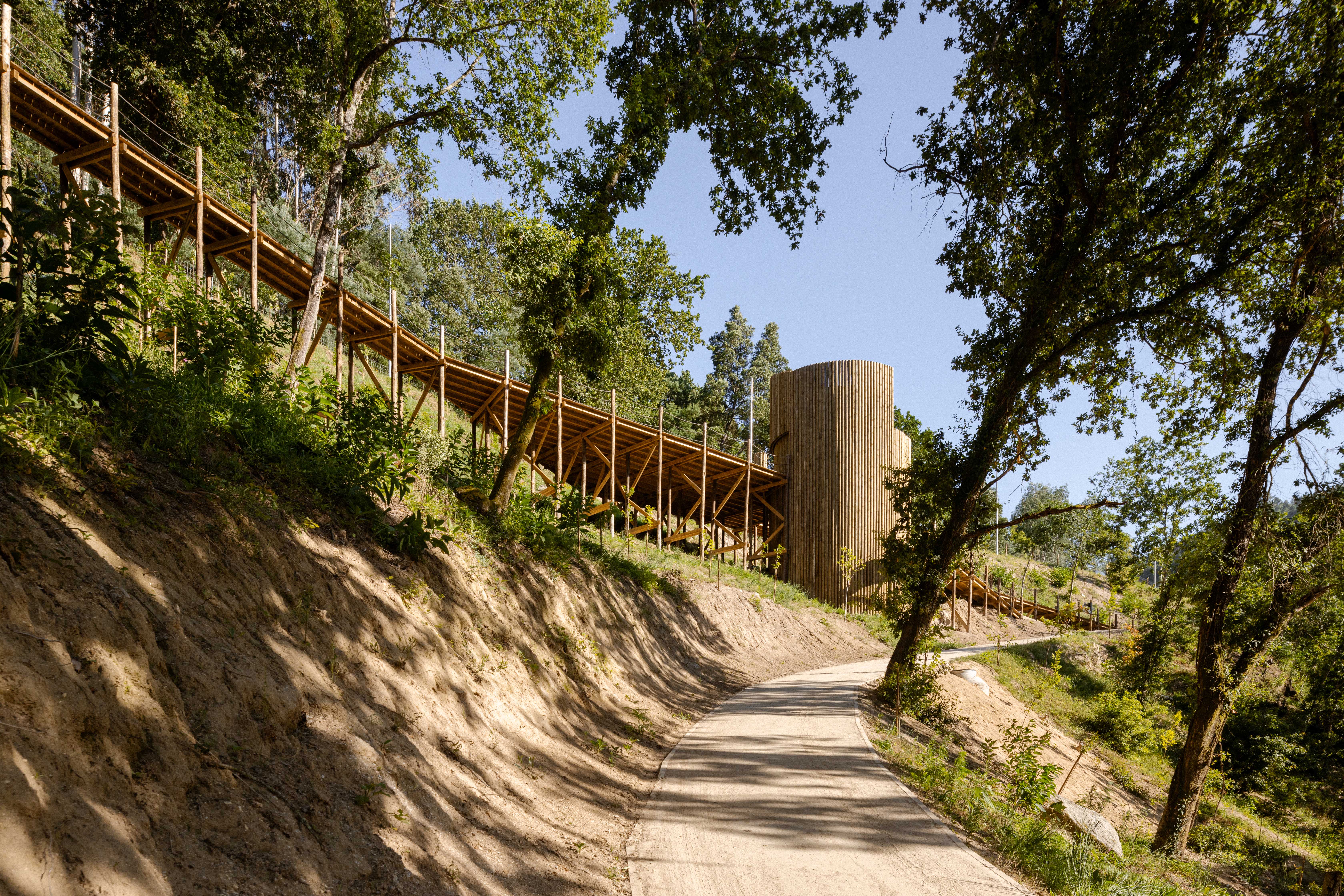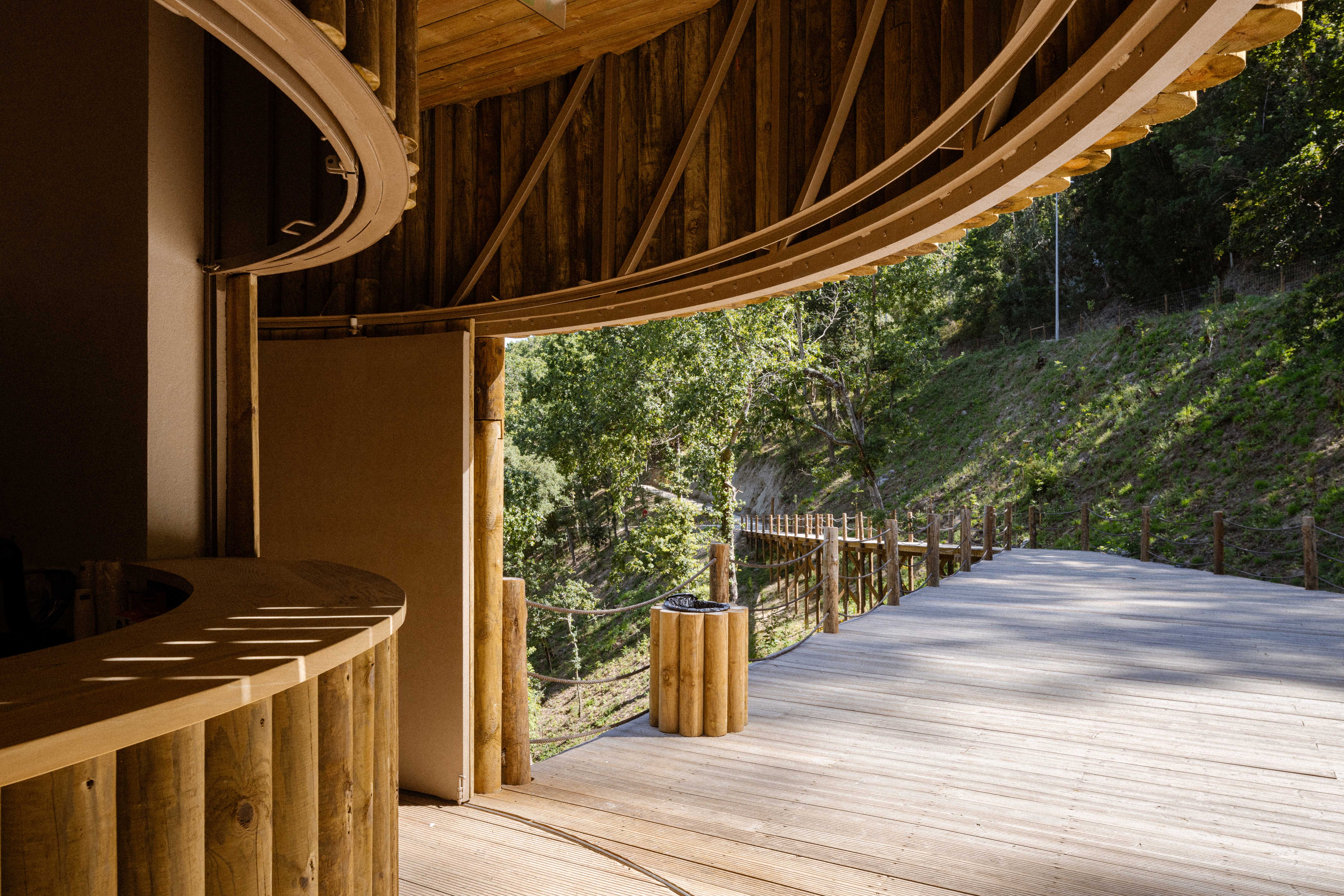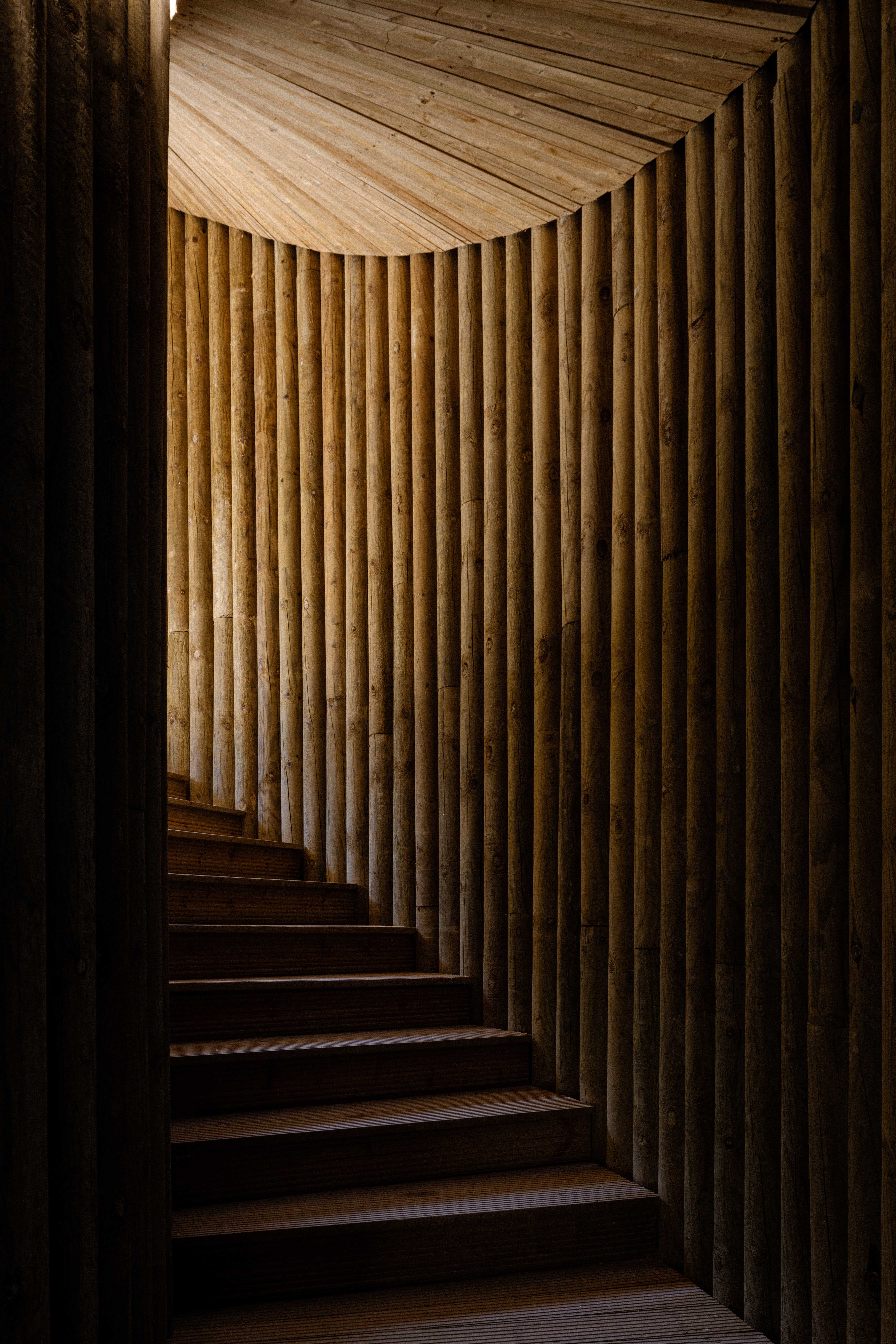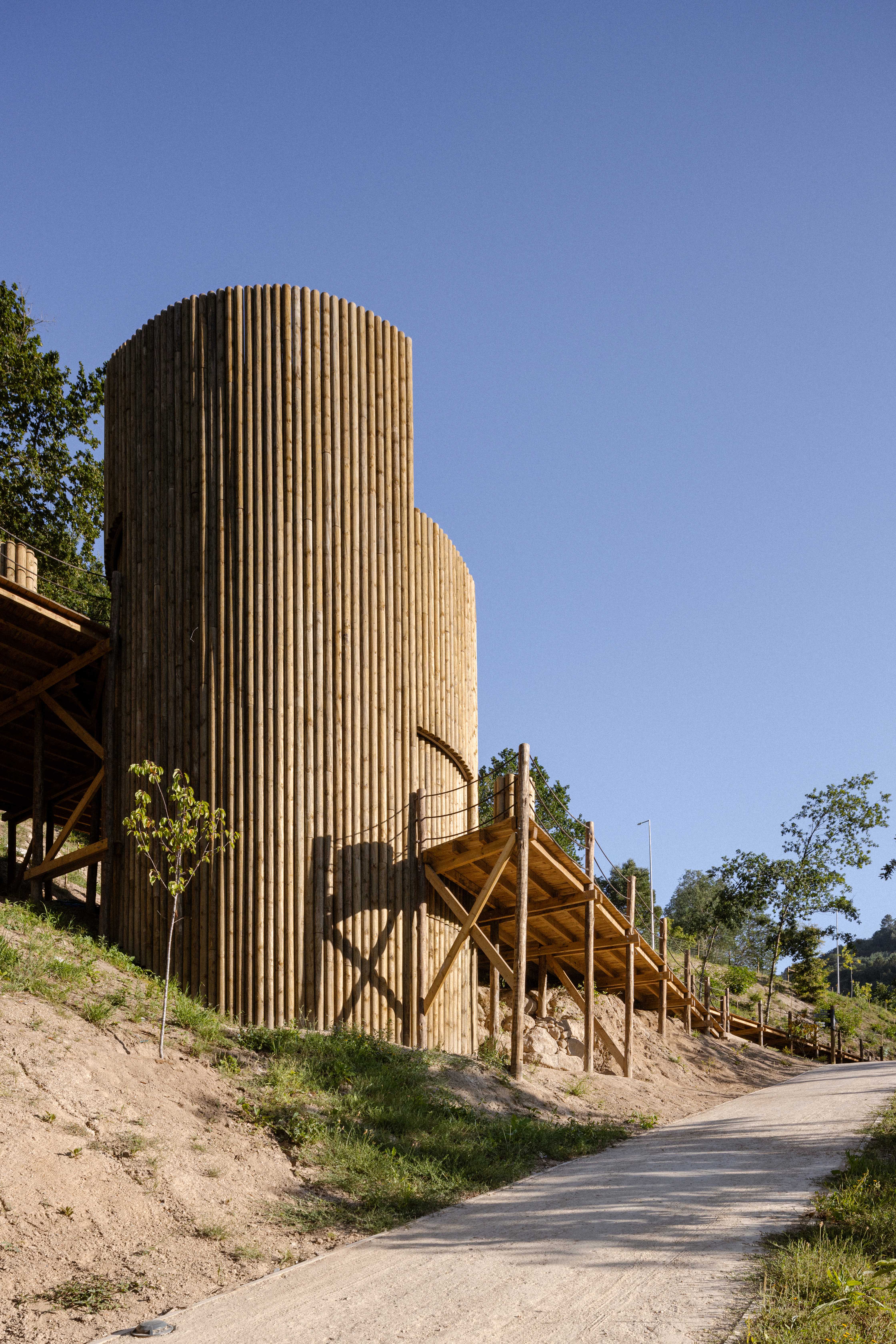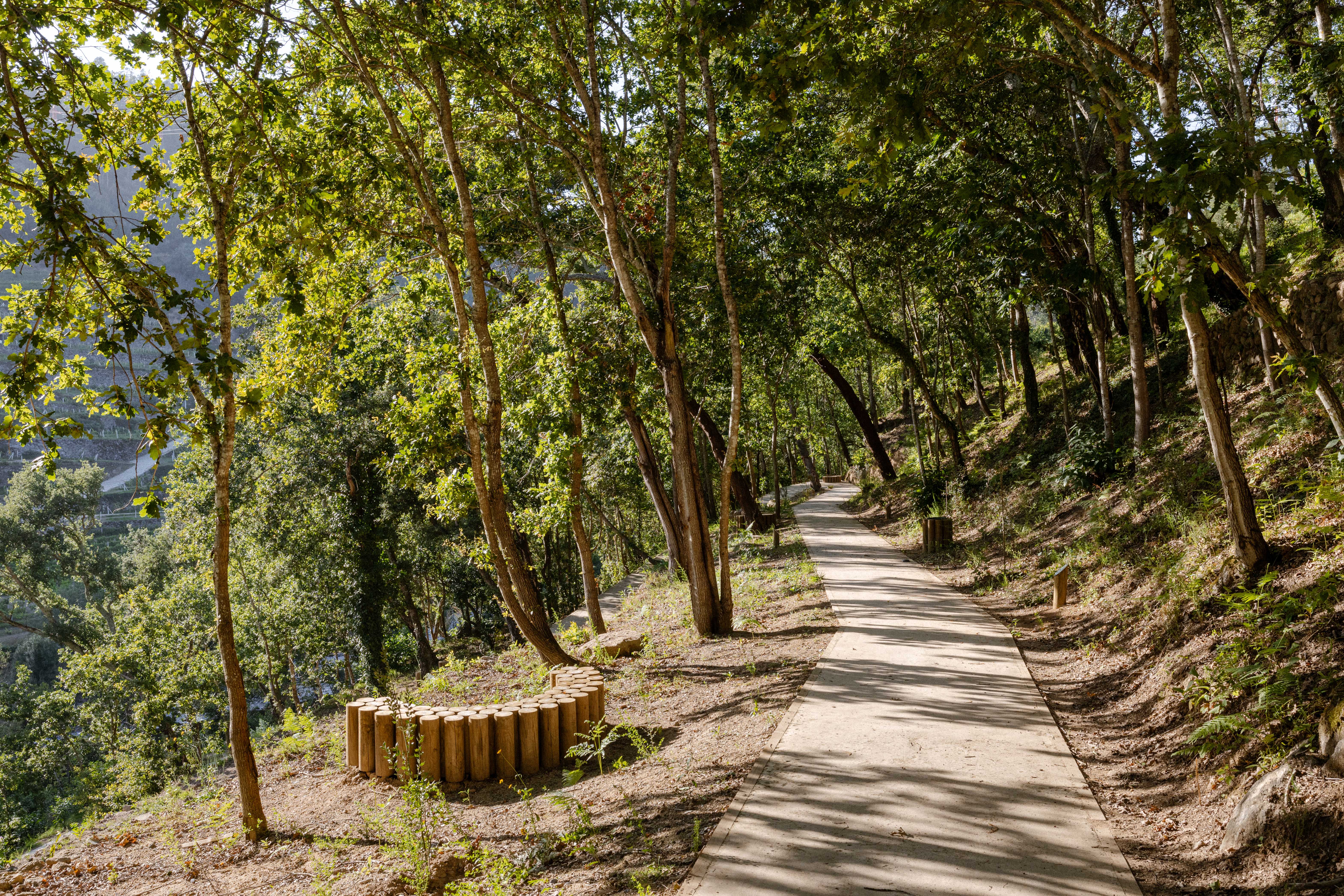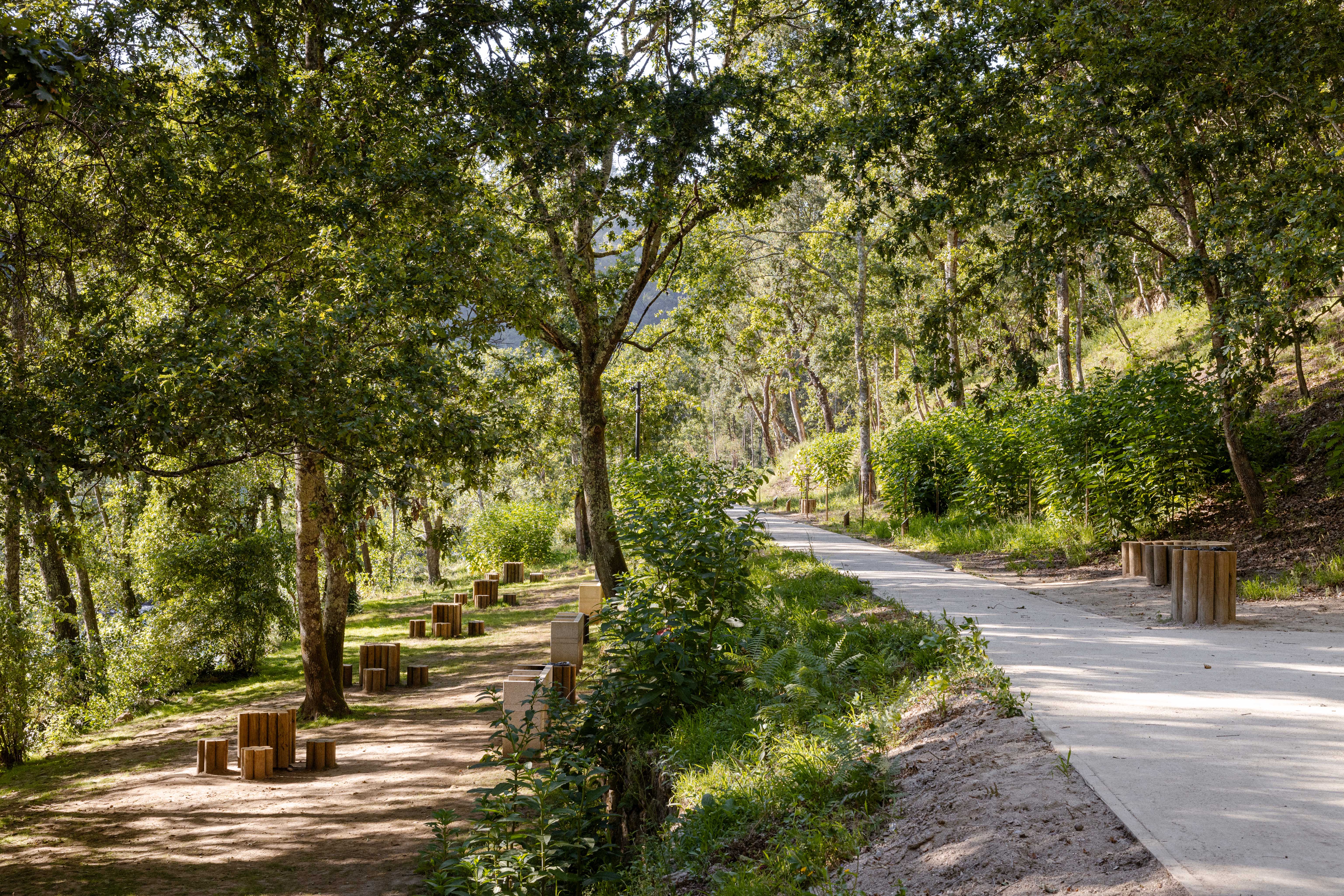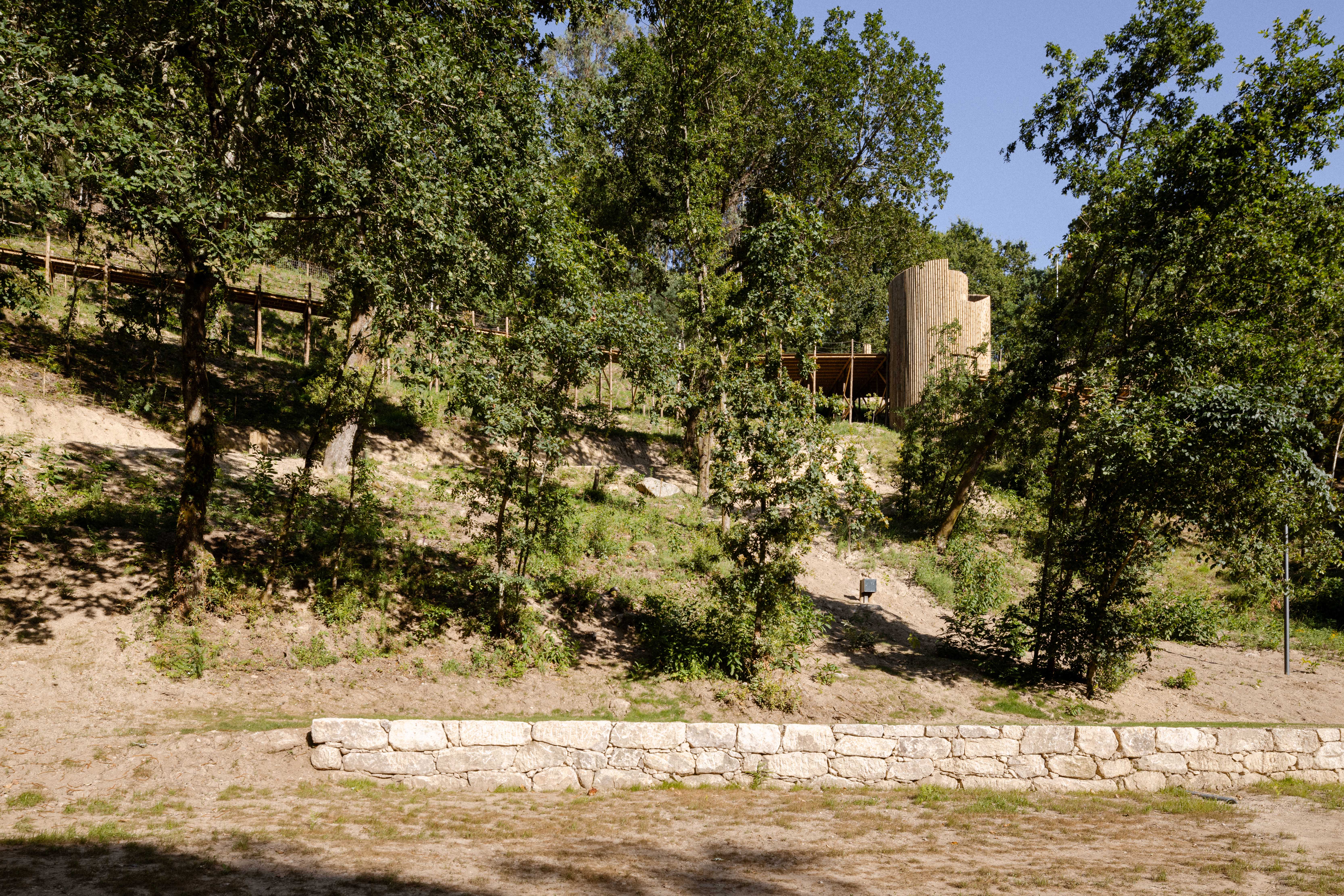SHORT DESCRIPTION
The order contemplated the creation of a Botanical and River Park on the banks of the Paiva River with a support building. The site, a wild and steep terrain populated by weed species, was already very popular for recreational activities, despite being used for dumping rubble. More than designing a park, the aim was to restore dignity and natural beauty to the place. Before any action or constructive thought, and in search of the history of the place, the site was cleaned and the invasive species removed, revealing not only the native species, but also ruined walls, terraces and ruins. From this analysis, the concept for the intervention was moulded: the use of natural materials and a building that rises at the convergence of paths and thematic areas. The natural materials selected were gravel for the paths and wood for the buildings. The circular wooden pole, which resembles the trunk of a tree, constitutes the elementary component that, in its combination, formalises all the structures within the park. The choice of these natural materials was aimed at their transformation and appropriation by the forces of nature and time. The landscaping in the park exhibits a sample of the regional natural variety. The plays of light and shadow between the foliage of the trees, their hues and intensities, the wind that carries the aromas of flowers and fruits, the water that flows in the river, and all the palpable textures of these sensory combinations manifest themselves as the essential result of the intervention. In the end, this project ultimately reflects another attempt to ensure that architecture is not reduced to the constructive act, but rather the means to harmonise the artificial and the natural, so that from this intimacy manifest the sensory experiences and a renewed spirit of place.



